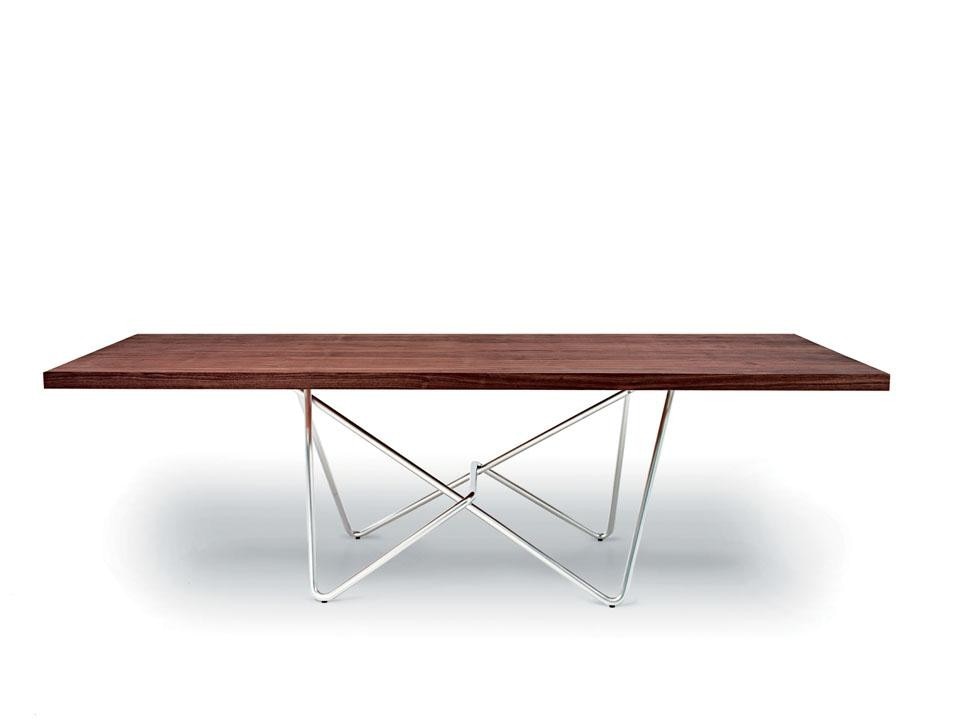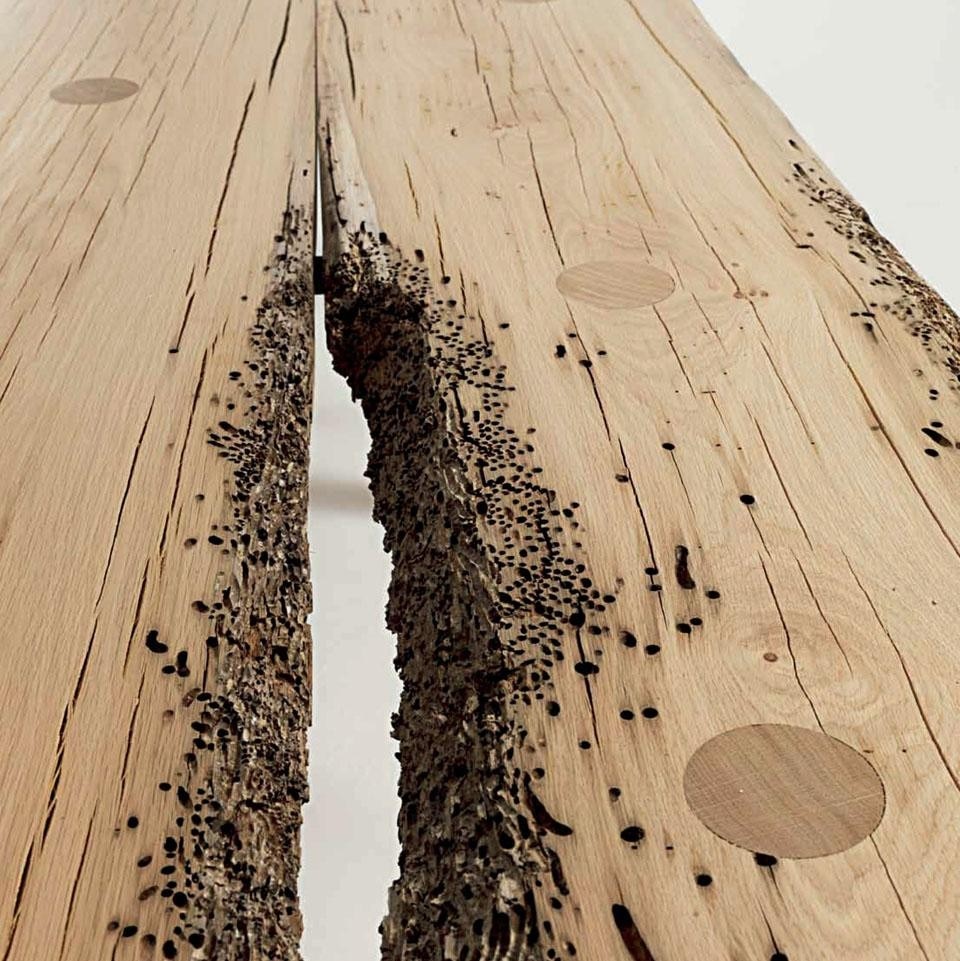
Riva 1920 has brought these narrative elements back into focus, especially in the case of wood. By moving them away from the dumbing down of certain stereotype models, the company is working to restore dignity and greater expressive capacity to words that, symbolism aside, are principally values to be kept alive and rejuvenated. Today, Riva 1920 sees wood not just as an increasingly "fragile" material, with many species at risk of extinction in this consumer era. For the Brianza firm, wood is also of the prehistoric variety re trieved from New Zealand swamps or recycled after centuries of use, as in the case of Venetian briccole, the piles used in the canals of the lagoon. All this rhetoric of millenary trees or centuries-old wood with a Venetian aura may seem slightly over the top. But, apart from the fascinating background of these types of wood, we must also acknowledge that these projects feature original research into wood as a material and into potential new developments. To our mind, such research goes beyond the simple and understandable marketing ploy centred on a material's little-known peculiarities.
Doing something new with wood isn't easy, because it seems that just about everything has already been done. However, novel ways of using indoor-outdoor domestic spaces have implied fresh requirements and languages, and hence different expressions and different contemporary narrative stories. Furthermore, advanced production techniques for ageing, working and finishing wood have opened up a range of ways to use and transform the material. Consequently, for however wood is traditional, it is confronted with different issues and demands. In this condition, good design united with good business can come up with a significant interpretation.
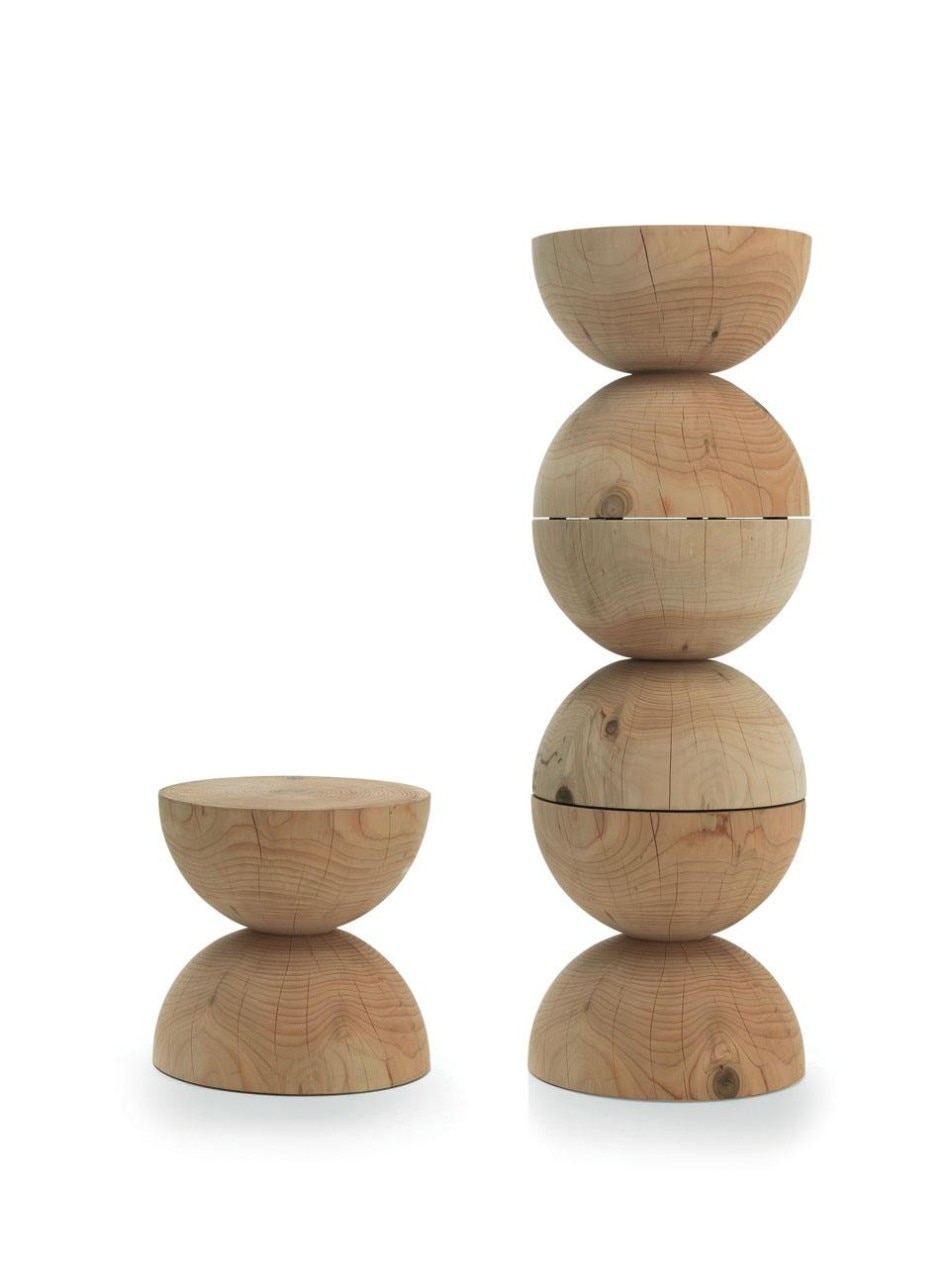
The Bookshelf system features an admirable neo-plastic compositional approach in the storage version, with the units detached. As a result, the display cabinets resemble furniture designed by Gerrit Rietveld, and particularly his famous Beukenhouten dressoirtje dated 1919. Regarding the classic trilithic or portal construction, we should remember that this ancestral compositional model is an unavoidable point of reference in the search for an essential and consistent line for a table or other elements with supports. Yet even here, the balance of the proportions is an important variable that should not be pushed beyond the limits that the eye is accustomed to recognising in the matter/form relationship.
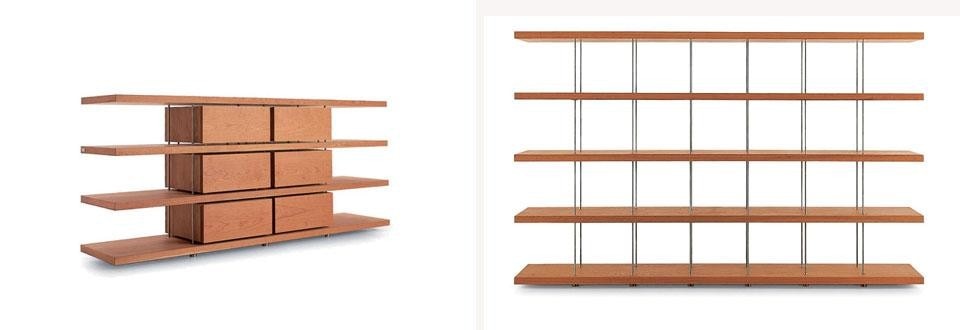
This theme of the material's mouldability can be interpreted in different ways. With Michele De Lucchi's Vegan table, the exercise in eroding matter ends up dissolving the mass of the legs into surreal fibrous struct ures, as if worn away and polished by time. These skeletal legs fit into the sides of a top that is also moulded, and almost worn at the edges. This design harks back to a world of Robinson Crusoe-like objects found in nature and simply adapted for use.
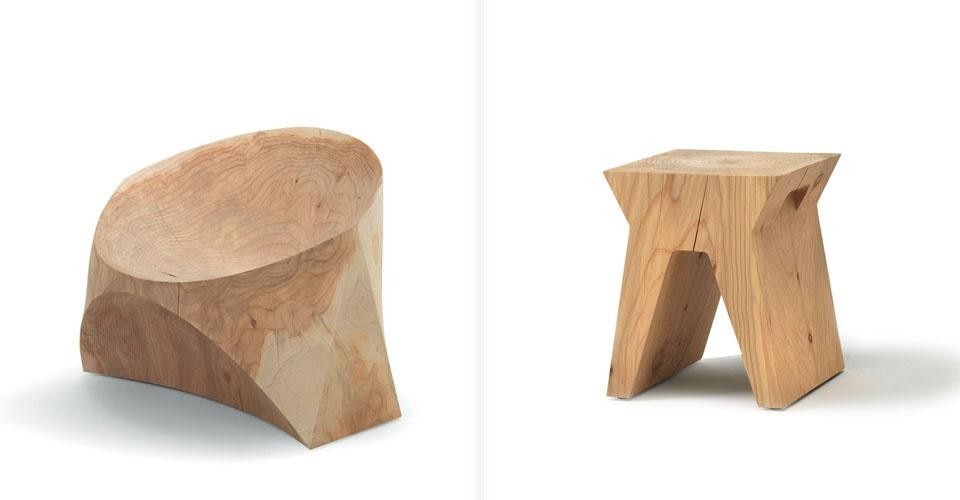
The seats designed by David Dolcini, Karim Rashid, Mario Botta and Terry Dwan, meanwhile, have a sturdier appearance and display varying degrees of plasticity. Here, the objects' solidity and heaviness prompts us to see them as entities that transmit a special poetic reaction produced by what philosophical metaphysics describes as "immanency". In these cases, solid wood regains the natural traits of a living and ageold material, with the inevitable cracks produced by its subjugation to the processes and context.
Given these successful examples of the direction undertaken by Riva 1920, we can look forward to more interesting developments from this company, which continues to uphold wood as a source of inspiration for design through its coherent experimentation with method, type and form.
